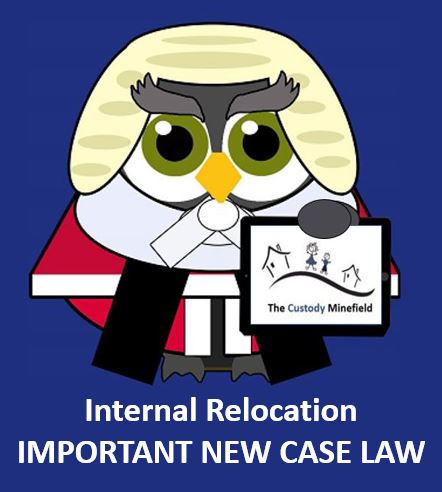Last month I alerted you to the fact that a new judgment was due from the Court of Appeal which clarifies and updates the application of family law in internal relocation cases. The judgment is now published and we’ll be adding this to our library in the coming days and updating our guides on internal relocation and family law.
The judgment is in the case Re C (Internal Relocation) [2015] EWCA 1305.
In 2011, the law relating to external relocation cases (the temporary or permanent movement of children abroad by one parent following separation) was updated, making the application of law more gender neutral, and focused more on the child’s welfare as opposed to the primary carer’s interests and well-being. This represented a balance shift which we welcomed, however somewhat bizarrely, this review of external relocation cases specifically excluded how the law was applied in internal relocation cases. Four years later, this long awaited review has happened.
I’ll be writing in more detail about what the changes mean, but dressed crab is waiting at my mother’s, it’s Christmas Eve and I’ll be in trouble if I’m late! Still… it’s too important a judgment and an announcement to delay.
For now, I’ll leave you with four important paragraphs from the judgment to ponder, which summarise this new and welcome change.
“82. I add a few words in an attempt to summarise the position that has now been reached. As counsel before us agreed, in cases concerning either external or internal relocation the only test that the court applies is the paramount principle as to the welfare of the child. The application of that test involves a holistic balancing exercise undertaken with the assistance, by analogy, of the welfare checklist, even where it is not statutorily applicable. The exercise is not a linear one. It involves balancing all the relevant factors, which may vary hugely from case to case, weighing one against the other, with the objective of determining which of the available options best meets the requirement to afford paramount consideration to the welfare of the child. It is no part of this exercise to regard a decision in favour or against any particular available option as exceptional.
83. One of the most difficult aspects of this case has been to establish in the light of previous authority what use, if any, should be made in the process we have just described of the 4 “disciplines” identified by Thorpe LJ at paragraph 40 of his judgment in Payne v. Payne [2001] EWCA Civ 166, [2001] 1 FLR 1052) (the “Payne factors”). In my judgment, one of the valid concerns about the Payne factors is that they do not adequately reflect the gender-neutral approach to these problems that the court will now adopt in every case. Whilst the Payne factors may still be of some utility in some cases, they are no part of the applicable test or the applicable principles. In some circumstances, the judge may find them useful. In others, the judge may not. If the judge finds them a useful guide to some of the factors that he should consider, he will be doing so only as part of the multi-factorial balancing exercise that is required.
84. Another difficult aspect of the case concerned the way in which the parents’ rights under article 8 of the ECHR should be factored in to this exercise. In my judgment, parents who are staying behind will always be able, in some measure, to pray in aid their article 8 rights necessitating a consideration of the proportionality of any proposed interference with those rights. That consideration should be an essential part of the balancing exercise itself and should not be undertaken separately so as to disrupt a joined up decision-making process.
85. Following comprehensive review of the authorities as set out in her judgment, the proper approach to the whole issue of relocation may be stated in summary as follows:
a) There is no difference in basic approach as between external relocation and internal relocation. The decision in either type of case hinges ultimately on the welfare of the child.
b) The wishes, feelings and interests of the parents and the likely impact of the decision on each of them are of great importance, but in the context of evaluating and determining the welfare of the child.
c) In either type of relocation case, external or internal, a Judge is likely to find helpful some or all of the considerations referred to in Payne v Payne [2001] 1 FLR 1052; but not as a prescriptive blueprint; rather and merely as a checklist of the sort of factors which will or may need to be weighed in the balance when determining which decision would better serve the welfare of the child.”
Merry Christmas to you all!
